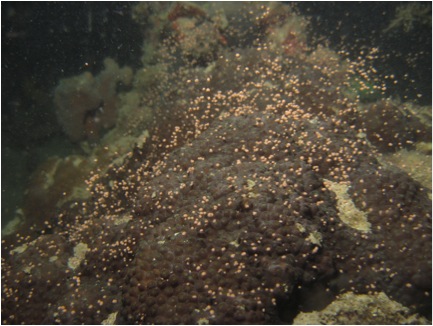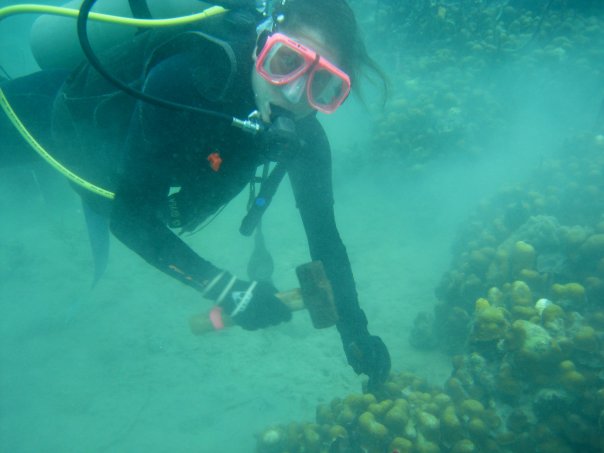

by Shelby Boyer, Invertebrate Zoology Lab
Timing is everything when it comes to coral spawning – spawning occurs once a year and is when corals synchronize the release of bundles of eggs and sperm into the water. In one of my first weeks in Panama, I was invited to help two coral researchers, Dr. Nancy Knowlton and Dr. Don Levitan, with an experiment on coral spawning.
Dr. Knowlton and Dr. Levitan have been studying a reef on the Caribbean side of Panama for eight years and have found that the colonies will spawn within minutes of the exact same time every year. By releasing their eggs and sperm at the same time, coral gametes have a good chance of coming in contact with one another for successful fertilization. Different species spawn at different times so that they have the best chance of only encountering eggs and sperm that they are compatible with.
To study this phenomenon, I went with a group of about 8 researchers, both professors and graduate students. We hopped on boats just before sunset and headed out to our field site at in island about a mile off of the coast of Panama. The spawning occurs at night so special preparations were necessary for us to dive in the dark and see them. All of the divers had flashlights but these only help you see a short distance. Before dark we got in the water and set up a line of glowsticks underwater so that we would be able to orient ourselves in the dark. From the boat it looked like an underwater rave!
When the time drew near, we all donned our scuba gear and each went to a section of the reef where we watched for the spawning. For the first 20 minutes or so, we just waited…..and waited….and waited….
Soon, I started to notice some of the coral polyps getting swollen on top and some of the bundles showing through the mouth of the coral. This is called the setting phase. Within 5-10 minutes of setting, the colonies released all of their eggs at the same time in a big sheet. The little yellow bundles floated slowly to the surface where they would pop open to release the eggs and sperm in a big gamete soup! At the same time that the corals started to release the bundles, other activities started on the reef. Worms, seastars, fishes and other organisms appeared and took advantage of an easy, slowly floating meal. I even felt little nibbles on my hands (nothing painful or that broke the skin) from so many hungry predators in the water. The presence of all these predators could be another reason for synchronous spawning: if you put thousands of bundles in the water at the same time, there are just too many for predators to eat.

It was a really exciting opportunity for me to accompany these researchers and I learned so much about coral spawning myself. I was able to make really positive connections with the professors and other graduate students that I will most likely see again as I continue my career as a coral researcher. Stay tuned over the next few months for updates on my own work.

